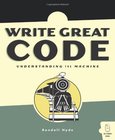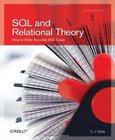Write Portable Code
An Introduction to Developing Software for Multiple Platforms

Book Details:
| Publisher: | No Starch Press |
| Series: | No Starch |
| Author: | Brian Hook |
| Edition: | 1 |
| ISBN-10: | 1593270569 |
| ISBN-13: | 9781593270568 |
| Pages: | 272 |
| Published: | Jul 01 2005 |
| Posted: | Nov 19 2014 |
| Language: | English |
| Book format: | |
| Book size: | 37.4 MB |
Book Description:
Portable software development is writing software that runs on a broad range of computer systems instead of just one (e.g., Windows). Programmers often pick up the idioms, tricks and methodologies for developing cross-platform software through sheer trial and error, as they encounter the same mistakes and patterns of code over time. If you're an intermediate-to advanced-level programmer who'd rather cut to the chase, Write Portable Code contains the lessons, patterns and knowledge you'll need for developing cross-platform software. Write Portable Code explains how to: avoid common portability mistakes when starting out a new project, thereby saving time when a port must occur re-factor existing, non-portable code so that it can be easily transplanted to new platforms find bugs masked by platform specific behaviors Programmers who avoid becoming married to a specific development environment or target platform greatly expand the target market for their software products. Whether you design cross-platform software from the ground up or have to move large amounts of code from one platform to another, the information contained in Write Portable Code will help you achieve your goals and grow as a programmer. TOCPrefaceIntroduction Chapter 1: Preparing for Portability Chapter 2: ANSI C/C++ Chapter 3: Techniques for Portability Chapter 4: Editing and Source Control Chapter 5: Processor Differences Chapter 6: Floating Point Chapter 7: Preprocessor Chapter 8: Compiler Quirks Chapter 9: User Interaction Chapter 10: Networking Chapter 11: Operating Systems Chapter 12: Dynamic Libraries Chapter 13: Security and Permissions Chapter 14: File Systems Chapter 15: Scalability and Portability Chapter 16: Portability and Data Chapter 17: Internationalization and Localization Chapter 18: Scripting Languages Chapter 19: Cross-platform Libraries and ToolkitsAppendix A: POSH Appendix B: The Simple Audio Library Appendix C: The Rules for Portability References
Download Link:
Related Books:
Write Great Code, Volume 2
Thinking Low-Level, Writing High-Level
The second volume in the Write Great Code series supplies the critical information that today's computer science students don't often get from college and university courses: How to carefully choose their high-level language statements to produce efficient code. Write Great Code, Volume 2: Thinking Low-Level, Writing High-Level, teaches software engineers how compilers translate high-level language statements and data structures into machine code. Armed with this knowledge, a software engineer can make an informed choice concerning the use of those high-level structures to help the compiler produce far better machine code--all without having to give up the productivity and portability benefits of using a high-level language....
Write Great Code
Understanding the Machine
If you've asked someone the secret to writing efficient, well-written software, the answer that you've probably gotten is "learn assembly language programming." By learning assembly language programming, you learn how the machine really operates and that knowledge will help you write better high-level language code. A dirty little secret assembly language programmers rarely admit to, however, is that what you really need to learn is machine organization, not assembly language programming. Write Great Code Vol I, the first in a series from assembly language expert Randall Hyde, dives right into machine organization without the extra overhead of learning assembly language programming at the same time. And since Write Great Code Vol I concentr...
SQL and Relational Theory
How to Write Accurate SQL Code
Understanding SQL's underlying theory is the best way to guarantee that your SQL code is correct and your database schema is robust and maintainable. On the other hand, if you're not well versed in the theory, you can fall into several traps. In SQL and Relational Theory, author C.J. Date demonstrates how you can apply relational theory directly to your use of SQL. With numerous examples and clear explanations of the reasoning behind them, you'll learn how to deal with common SQL dilemmas, such as:Should database access granted be through views instead of base tables? Nulls in your database are causing you to get wrong answers. Why? What can you do about it? Could you write an SQL query to find employees who have never been in the same department for...
2007 - 2021 © eBooks-IT.org



